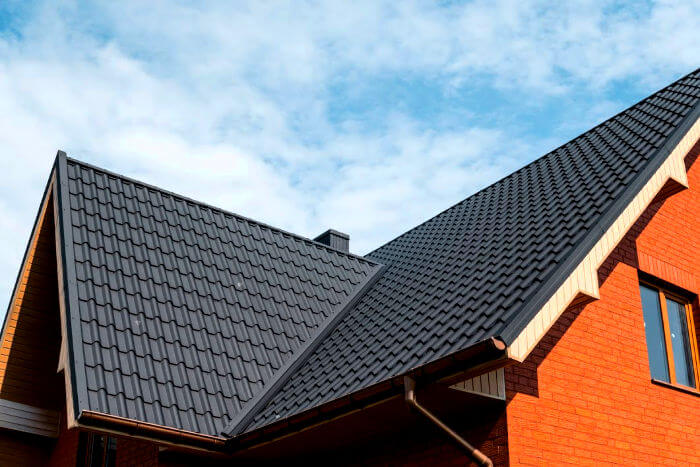What the Heck Is Montclair Flat Roof Installation?
Water Will Discover a http://query.nytimes.com/search/sitesearch/?action=click&contentCollection®ion=TopBar&WT.nav=searchWidget&module=SearchSubmit&pgtype=Homepage#/Montclair Roofing Method
Water marks on a ceiling, or worse, leaking water, might have you worried that your entire roof remains in tatters. Yet even if there's a leak does not mean your roof covering will need a substantial amount of repairs. Sometimes quiting it is as simple as loading a fracture with caulk, changing a couple of tiles, or mounting some blinking-- a membrane layer or layer of metal that gives a mechanical obstacle to reroute water at edges, gaps, voids, and other areas vulnerable to dripping.
Dropped tree arm or legs, hailstorm, and even wind can loosen or get rid of shingles. Damaged flashing is an additional common perpetrator. Also rubberized boots around plumbing pipes, or with improperly installed satellite dishes or solar panels can trigger isolated leaks. To identify what kind of leakage you've jumped on your hands, initially attempt to map it to its beginning.
Trying to find Leakages
It's most convenient to find a leak when it's drizzling outside. Keep in mind that water usually collects at a spot that's various from where it's entering-- it generally diminishes the length of a rafter or stud and only trickles once it gets to a low point.
In an unfinished attic room, the framework shows up, so simply start at the leak and look along the size of any kind of wood framing that results in that point, to see if you find a trail of water that comes from higher Montclair Roof Repair on your roofing system. In a completed attic, you'll need to utilize a handheld device called a jab attended cut away any kind of drywall that obstructs your view. Once you assume you've discovered the origin, consider top of the roofing (you can do this safely from the ground with a pair of binoculars) to see if you can recognize any kind of obvious perpetrators, like missing tiles, or broken blinking near a chimney.
If you can not find the leak yourself, a licensed professional roofer can carry out an assessment and also make referrals regarding whether fixing or replacement is needed. Also if you're able to find your own leakage, you'll want to leave the repair work to a pro-- climbing up onto your roof covering with a tall expansion ladder is a hazardous task. A lot of leakages can be stopped if they're limited to a few areas. If, nevertheless, you're experiencing reoccuring leakages, as well as your roofing system runs out service warranty, it may be time for a brand-new roof. The cash you would invest in several short-term fixes is most likely much better applied to a new roof with an extensive service warranty.
Other Warning Signs
You don't have to wait for leakages to show up prior to you think about repair services to your roofing, however. Missing out on, harmed, or curling tiles can all be indicators of leaks ahead. And the age of your roofing itself can be a guide-- home owner's insurance companies generally think an asphalt roof shingles roofing system will certainly last concerning twenty years, as well as some insurance firms won't offer coverage if your roof covering is older than that. If your roofing was placed on by the previous owner of your residence, a roofer or a certified residence assessor can normally give a harsh quote of the age, based upon the condition of the roof shingles.
Even without leaks or evident signs of damage to the roofing system, it can make sense to replace an out-of-warranty roof that's greater than twenty years old. That's because as soon as a leakage creates, it can do serious damages to the timber sheathing beneath the tiles. And also if Montclair Flat Roof that sheathing becomes deformed or decomposed, replacing it can add numerous thousand bucks to the overall expense of your new roofing when you do navigate to changing it. The illustration below shows the different layers involved in a typical roof covering.
Insurance coverage Protection
Prior to you employ any individual to service your roofing, call your home owner's insurer to inspect your deductible as well as insurance coverage for roofing system repairs or substitute. You'll wish to evaluate your out-of-pocket prices against the expense of replacing your roofing totally. Take into consideration any type of resulting boost in your costs also-- it might make even more sense to merely cover the price yourself.

Usually, homeowner's insurance policies might cover, or contribute toward, the repair of isolated leakages, yet won't cover the cost of replacement. The majority of insurance companies will send out an adjuster to give a quote for the repair, and also plans normally cover repairs to the roofing system, along with any damage to the framing, drywall, or floor covering that arises from a dripping roof covering. If you do get a payment from your insurance company, you can make use of that money to make the specific repair work, or apply it towards the cost of a complete replacement.
